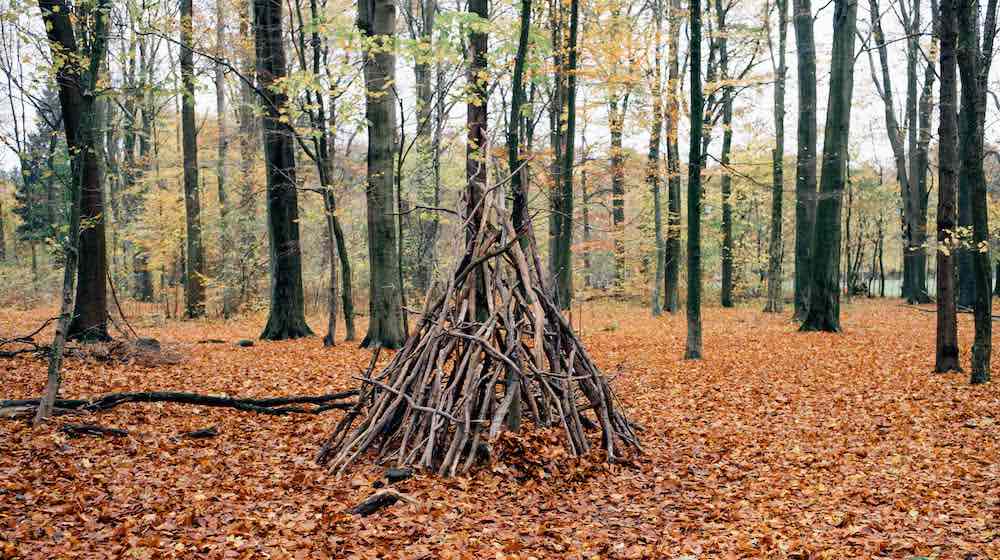Camping
Predicting the Weather

Have you ever headed out in the morning to what you expect to be a bright and sunny day, only to have the bottom fall out of the sky hours later, leaving you soaked and miserable?

I have…
And while the weather is always unpredictable at best (especially in the spring) there is one simple trick that can you can do in order to keep yourself out of rough weather…. most of the time at least.
Read the clouds!
Cloud reading has been used as a basic primitive weather prediction for thousands of years, and unfortunately our protected, indoor lifestyle has caused us to forget how to read the world around us.
Clouds can easily be broken into four categories. These categories are high clouds, middle clouds, low clouds and clouds with vertical growth.
Clouds are one of the most reliable predictors of weather and cloud reading is a basic skill that every survivalist, hiker, camper and outdoors man should know.
So how do you “read” the clouds?
It's fairly simple when you know what you are looking at.

10 Types of Clouds
There are 10 types of clouds that you should be able to recognize, but if you get their names confused, just remember that the higher the clouds, the better the weather will be.
- Cirrocumulus Clouds look like ripples of water on the surface of a lake. There are a sign of good weather and often dissipate to blue sky.
- Altocumulus Clouds are fair weather clouds. They usually occur after a storm.
- Cumulonimbus Clouds are low thunder clouds that bring hail, strong wind, thunder and lightning. They have a characteristic flat, anvil-like top.
- Cumulus Clouds are easily recognizable, large, white, fluffy clouds. They indicate fair weather when they are widely separated, but if they are large and many headed, they are capable of bringing heavy showers.
- Cirrus Clouds are high altitude, wispy clouds, seen in fine weather.
- Cirrostratus Clouds are made up of ice particles and form a halo around the sun. If a Cirrus filled sky darkens and turns to Cirrostratus it is a sign of rain or snow, depending on temperature.
- Altostratus Couds form a greyish veil over the sun or moon. If they get darker and thicken, it is a sign that rain is on the way.
- Nimbostratus Clouds form low blankets of cloud and indicate rain or snow, lasting for several hours.
- Stratocumulus Clouds can form a lumpy mass covering the entire sky and may produce light rain, but usually dissipate by the late afternoon or evening.
- Stratus Clouds are low clouds that form a fog like layer and may produce drizzle. If they form thickly at night and cover the morning sky, they will usually burn off and produce a fine day.
So the next time you head out for the day, take a quick look at the sky and make a judgment call on whether or not you should bring sunglasses or an umbrella.
Have you ever used this method while camping or hiking to know whether to run for the hills or head for the beach?
Weather Forecasting the Old Fashioned Way
Severe Weather Safety
28 “Old Timer” Ways To Predict The Weather
-

 Paracord Projects1 year ago
Paracord Projects1 year agoParacord Projects | 36 Cool Paracord Ideas For Your Paracord Survival Projects
-

 Paracord Projects1 year ago
Paracord Projects1 year agoHow To Make Paracord Survival Bracelets | DIY Survival Prepping
-

 Medical Care1 year ago
Medical Care1 year ago21 Home Remedies For Toothache Pain Relief
-

 Knife Laws1 year ago
Knife Laws1 year agoAre Switchblades Legal? Knife Laws By State
-

 Do It Yourself1 year ago
Do It Yourself1 year agoSurvival DIY: How To Melt Aluminum Cans For Casting














JAR
April 25, 2013 at 7:54 AM
One fairly reliable way to know if it is going to rain or not, during the day, is to check the dew on the grass in the morning. I think it has something to do with atmospheric pressure and dew points or something. If there is no dew on the grass in the morning, and the sky is a bit hazy or there are rain clouds, it is likely to rain that day. Also, if there is a hazy halo around the moon at night, one might expect some rain/snow that night, or the next day. This is old farmer’s wisdom…
Bev
April 25, 2013 at 5:52 PM
My mother always said horizontal cobwebs in the grass in the morning means it will clear up later in the day. Seems like that has always been true…BUT one dark cloudy morning I saw LOTS of those cobwebs & did a load of laundry even though it looked like it was going to rain…Yes, it did rain, but when it finished raining, THEN it did clear up!
Debbra W
April 25, 2013 at 8:37 PM
We live in the San Gorgonio Wilderness in the San Bernardino Mnts. in Southern California. We live at the upper end of a canyon surrounded by high peaks. Our house is 6700 feet in elevation. Your article, Joe, is much appreciated. The sawtooth peaks, it’s like living in a mouth with high teeth all around, range from 9000 feet to 11,500+ feet in elevation. If we get a cloud, we tend to keep it. Those lovely clouds pictured in your article are a nice revelation to me. I know that if we get much in the way of winds here the “weather” will follow in hours to a day. I will print out your picture and article and keep a better watch. Behind my house is Rattlesnake Creek which is a flash flood control gully. I NEED to know when it’s going to rain. The mountains are fun, and furious. Everyone come visit, maybe when it’s sunny.
Mark Spoon
April 26, 2013 at 9:58 AM
You can also tell when rain is about to come by the leaves on the trees. They will “turn upside down”. In other words, you can see the bottom of them. They will look lighter than green. This will happen 99% of the time when rain clouds are coming in.
snowman8wa
April 26, 2013 at 12:21 PM
Washington weather can change in an instant, Mt. Rainer produces it’s own weather problems. As an Air Traffic Controller we had to know weather, At Towered Airports that do not have NWS on site, the Controllers have to prepare the observatons, we were required to pass the National Weather Service’s Limited Avation Weather Reproting Service (LAWRS) Test for taking the weather; anything by “limited”. A well appreciated ability.
Pingback: 31 Survival Skills for the True Outdoorsman | Survival Life
Pingback: Survival Skills For The True Outdoorsman | Survivallife
Pingback: 31 Survival Skills For The True Outdoorsman - Survive!
Pingback: Weather Forecasting | The Old Fashioned Way | Survival Life
Pingback: Weather Forecasting The Old Fashioned Way – Ultimate Survival Alerts
Delicia Ambrosino
June 7, 2019 at 2:11 PM
I smell the air…….and I’m usually right.